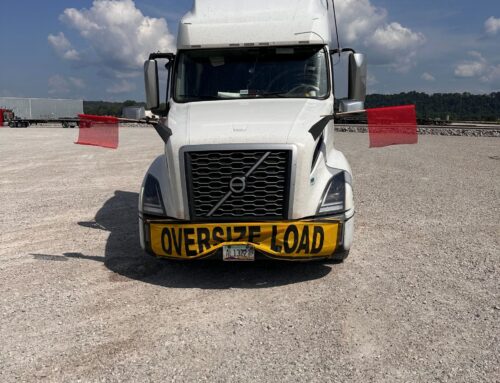
Revolutionizing Fleet Management With Data Analytics
Table Of Contents:
- Unlocking the Power of Data Analytics in Fleet Management
- Key Takeaways
- Understanding Predictive Analysis in the Context of Fleet Data Analytics
- Key Applications of Predictive Analysis for Enhanced Fleet Management
- Implementing Predictive Analysis Within Your Fleet Management Strategy
- Overcoming Common Hurdles in Predictive Fleet Data Analysis
- Measuring the Success and Return on Investment of Predictive Analysis in Fleet Operations
- The Evolving Landscape of Predictive Analysis and Data Analytics in Fleet Management
- Final Thoughts
- Frequently Asked Questions
Unlocking the Power of Data Analytics in Fleet Management
In today’s competitive transportation landscape, fleet management is evolving rapidly through the integration of predictive analytics. Businesses are increasingly leveraging data insights to improve fleet performance, reduce costs, and enhance safety. Predictive analytics in fleet management involves using historical data and statistical techniques to forecast maintenance issues, optimize fuel consumption, and streamline route planning. By understanding these data-driven strategies, companies can achieve a higher return on investment while maintaining regulatory compliance and superior customer satisfaction. This article explores the fundamentals, key applications, implementation strategies, common hurdles, ROI measurement, and the evolving role of predictive analytics in fleet management.
Key Takeaways
- Predictive analytics is essential for anticipating maintenance, optimizing fuel usage, and enhancing driver safety.
- Effective fleet data analysis relies on quality data sources and the use of advanced predictive modeling techniques.
- Implementation of predictive tools requires clear objectives, robust data collection, and strategic integration into daily operations.
- Overcoming challenges such as data quality and security is key to realizing the benefits of predictive fleet management.
- The evolving landscape with AI and IoT integration paves the way for more sustainable and personalized fleet solutions.
Understanding Predictive Analysis in the Context of Fleet Data Analytics
Predictive analysis in fleet management refers to the process of using historical fleet data to forecast future events such as vehicle breakdowns, fuel consumption spikes, or safety incidents. This approach enables fleet managers to make informed decisions before issues escalate.
Defining Predictive Analysis for Fleet Operations
Predictive analysis involves the use of statistical algorithms, machine learning models, and data mining techniques to predict future performance outcomes. This method relies on vast amounts of raw data collected from fleet telematics, sensors, and maintenance logs, enabling organizations to forecast vehicle behavior, schedule timely maintenance, and optimize fleet utilization.
The Significance of Data Analytics in Fleet Management for Future Predictions
Effective data analytics offers fleet managers the intelligence needed for proactive decision-making. By understanding patterns in fuel consumption, driving behavior, and maintenance trends, companies can reduce down time and operational costs. Predictive analytics transforms reactive fleet management into a strategic, future-focused activity.
Key Data Sources Powering Predictive Fleet Insights
Critical data sources include GPS tracking data, fuel card transactions, driver behavior reports, and maintenance history documentation. These various inputs contribute significantly to constructing robust predictive models that inform strategic decisions regarding asset replacement and regulatory adherence.
Distinguishing Predictive Analytics From Other Fleet Data Analysis Methods
Unlike descriptive analytics that explains past performance, predictive analytics projects future scenarios through advanced modeling. It differs from diagnostic analytics, which attempts to determine causal relationships, by focusing on forecasting events that allow fleet management teams to mitigate risks in advance.
Key Applications of Predictive Analysis for Enhanced Fleet Management
Predictive analytics offers numerous applications in fleet management. Its integration not only increases operational efficiency but also significantly boosts safety and cost savings by foreseeing potential disruptions.
Anticipating Vehicle Maintenance Needs With Predictive Data Analytics
Using predictive models, fleet managers can determine when a vehicle will likely require maintenance, reducing unexpected breakdowns. This proactive approach improves overall fleet uptime and extends the asset lifecycle.
Optimizing Fuel Consumption Using Predictive Fleet Analysis
Data analytics helps optimize fuel usage by uncovering patterns that lead to wastage. Predictive tools suggest route modifications and driver behavior adjustments, thereby improving fuel efficiency and cutting operating expenses.
Improving Driver Safety and Reducing Risks Through Predictive Insights
By evaluating driver performance data, predictive analytics identifies risky behaviors that could lead to accidents. Interventions based on these insights yield safer driving practices and lower insurance costs for fleet operators.
Forecasting Operational Demands and Streamlining Route Planning
Analyzing historical route and delivery data helps forecast future traffic and demand trends. This knowledge allows fleets to adjust schedules, plan efficient routes, and minimize transit times, ensuring timely delivery and enhanced customer service.
Predicting Asset Lifespans for Strategic Replacement Scheduling
Predictive analytics estimates the remaining lifespan of vehicles based on usage, maintenance, and environmental factors. These insights support the strategic replacement of underperforming assets and ensure continuous fleet performance.
Implementing Predictive Analysis Within Your Fleet Management Strategy
For successful incorporation of predictive analysis, organizations must establish clear objectives and secure quality data. A well-planned strategy ensures that the acquired insights lead to actionable improvements and better fleet performance.
Establishing Clear Objectives for Your Fleet’s Predictive Analysis Initiatives
The first step involves setting clear, measurable goals such as reducing maintenance costs or improving fuel efficiency. These objectives form the basis for evaluating the effectiveness of predictive models.
Systematically Collecting and Preparing Fleet Data for Accurate Analysis
Reliable predictive models depend on the quality of data collected from various sources. This phase requires the integration of telematics, maintenance logs, and fuel consumption records into a unified data warehouse for thorough analysis.
Selecting Appropriate Predictive Modeling Techniques for Fleet Data
Choosing the right modeling techniques—such as regression analysis, neural networks, or decision trees—is essential to forecast outcomes accurately. These models must be validated using historical data and adjusted regularly to maintain accuracy.
Choosing Suitable Predictive Analytics Tools and Fleet Management Software
Modern fleet management software integrates predictive analytics capabilities. These tools enhance data integration and allow for real-time monitoring, significantly improving decision-making processes.
Integrating Predictive Findings Into Daily Fleet Operational Workflows
The final integration step involves incorporating analytics insights into everyday operations. Alert systems, automated scheduling, and continuous performance monitoring help ensure that predictive analysis drives tangible improvements in fleet management.
Overcoming Common Hurdles in Predictive Fleet Data Analysis
While predictive analytics offers clear advantages, several hurdles must be overcome. Data quality, implementation costs, skill shortages, and security concerns are primary challenges that fleet managers face during adoption.
Addressing Data Quality and Availability for Reliable Fleet Analytics
Ensuring the completeness and accuracy of data is critical. Regular audits and validation processes help maintain high standards of data quality, providing a reliable foundation for predictive analytics.
Managing Implementation Costs and Resource Allocation Effectively
Implementing advanced analytics solutions can be resource-intensive. Strategic budgeting and phased implementation ensure that costs are managed effectively while delivering actionable insights.
Developing Essential Skills and Expertise for Predictive Fleet Analysis
There is a growing need for data scientists and analysts proficient in fleet telematics and machine learning. Investing in training and recruitment supports the necessary expertise for effective predictive modeling.
Ensuring Data Security and Privacy in Fleet Management Analytics
Data security is paramount, particularly when handling sensitive operational data. Robust cybersecurity measures and compliance with regulatory standards help protect fleet data from breaches and misuse.
Fostering Organizational Buy-in for Predictive Analysis Adoption
Successful implementation requires support from all stakeholders. Clear communication of benefits and consistent demonstration of ROI encourage broader organizational adoption of predictive analytics initiatives.
Measuring the Success and Return on Investment of Predictive Analysis in Fleet Operations
To fully realize the benefits of predictive analysis, organizations must establish metrics that capture improvements in efficiency and cost reduction. Regular evaluation ensures continued progress and identification of further opportunities.
Identifying Key Performance Indicators for Predictive Fleet Management
KPIs such as maintenance downtime, fuel consumption, and accident rates are essential for measuring the success of predictive initiatives. Establishing benchmarks against industry standards drives continuous improvement.
Quantifying Cost Reductions From Proactive Maintenance and Optimized Operations
Proactive maintenance scheduling and efficient route planning lead to significant cost savings. Quantitative metrics help track these reductions and justify investment in predictive technologies.
Assessing Enhancements in Overall Fleet Efficiency and Vehicle Uptime
Increasing vehicle uptime and operational efficiency directly impact the bottom line. Monitoring these metrics provides insight into the overall health and performance of the fleet.
Evaluating the Influence on Driver Behavior and Safety Outcomes
Improved safety and reduced risk of accidents result from data-driven adjustments to driver behavior. These benefits are quantified through reduced insurance claims and enhanced driver performance reviews.
Continuously Refining Predictive Models With Performance Data Analytics
Regular updates to predictive models are necessary in response to changing conditions and new data. Iterative improvements ensure that predictive insights remain accurate and relevant.
The Evolving Landscape of Predictive Analysis and Data Analytics in Fleet Management
The integration of emerging technologies such as AI, machine learning, IoT, and advanced telematics is redefining predictive fleet management. These technologies enable more dynamic and personalized fleet solutions, unlocking further efficiency and sustainability gains.
The Expanding Influence of AI and Machine Learning in Predictive Fleet Solutions
AI and machine learning algorithms are enhancing the accuracy of predictive models by analyzing complex datasets and uncovering hidden insights. This enables more precise forecasting of maintenance needs and operational demands.
Progress in Real-Time Data Analytics for Dynamic Fleet Adjustments
Real-time analytics offer immediate visibility into fleet performance, allowing managers to address issues as they arise. This capability is critical for maintaining operational continuity and responding quickly to emergent challenges.
Synergies With IoT and Advanced Telematics for Superior Predictive Capabilities
The convergence of IoT devices and telematics data provides a richer dataset for predictive analysis. This combination allows for more granular monitoring of vehicle performance and environmental conditions, yielding superior insights.
The Rise of Personalized Predictive Insights for Drivers and Vehicles
Personalized analytics cater to both driver performance and vehicle-specific trends. Customized recommendations help optimize driving behavior, enhance fuel efficiency, and extend asset lifespans.
Aligning Predictive Analytics With Sustainable and Eco-Friendly Fleet Practices
Predictive analytics supports sustainability initiatives by identifying opportunities to reduce fuel consumption and greenhouse gas emissions. Aligning these insights with environmental goals enhances corporate social responsibility and reduces operational costs.
Final Thoughts
Predictive analytics in fleet management is revolutionizing the transportation sector by providing critical insights that drive efficiency and safety. By leveraging quality data and advanced modeling techniques, businesses can proactively schedule maintenance, optimize fuel consumption, and make informed strategic decisions. Overcoming challenges such as data quality and security is essential to fully harness these benefits. As AI and IoT technologies continue to evolve, the future of fleet management holds even greater promise for sustainable, efficient, and personalized operations.
Frequently Asked Questions
Q: What is predictive analytics in fleet management? A: Predictive analytics uses historical data and machine learning techniques to forecast fleet performance, identify maintenance needs, and optimize operations, thereby reducing costs and improving safety.
Q: How do predictive models enhance fleet efficiency? A: By forecasting issues before they occur, predictive models enable proactive maintenance, optimal route planning, and improved fuel management, ultimately increasing vehicle uptime and operational efficiency.
Q: What are the challenges in implementing predictive analytics for fleets? A: Challenges include ensuring data quality, managing implementation costs, securing skilled personnel, and protecting data privacy while garnering organizational support for the technology.
Q: How do AI and IoT improve predictive analytics in fleet management? A: AI and IoT technologies provide real-time data and advanced analytical capabilities that lead to more accurate forecasts, personalized insights, and dynamic adjustments to fleet operations.
Q: What measurable benefits can companies expect from predictive fleet analytics? A: Companies can see reduced maintenance costs, improved driver safety, better fuel efficiency, increased asset lifespans, and significant overall cost reductions, contributing to a competitive advantage in the market.















